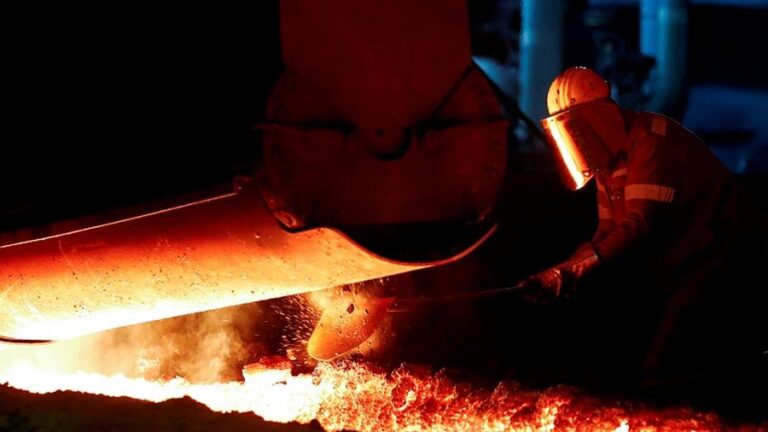Mosul’s Bloodbath: ‘We killed Everyone – IS, Men, Women and Children’
The Iraqi soldier looks out from his tiny three-walled room, across a wasteland of rubble that crumbles steeply down to the banks of the Tigris, and contemplates his final, brutal, days of fighting Islamic State.
“We killed them all,” he says quietly. “Daesh, men, women and children. We killed everyone.”
What remains of this part of Mosul’s Old City, where Islamic State (IS) fighters made their last stand, is a terrible place. And what lies beneath betrays the dark final days what happened in the battle for Mosul.
We killed them all. Daesh, men, women and children. We killed everyone.
– Iraqi soldier, Mosul
Hundreds of corpses lie half-buried in the broken masonry and rubble that was once a bustling, historic quarter. The stench of their decay, which comes fast in the 50C summer heat, overwhelms the senses.
Feet are the most distinguishable remains. And there are many, poking from the rubble.
That final killing spree has left its terrible mark, and it is one some appear keen to cover over.

Over the last week, armoured bulldozers have trundled back and forth over the crumpled houses, compressing hundreds of corpses into the rubble.
But the dead do not go away. Rotting body parts glow a reddish-brown amid the pale grey of the undulating landscape of masonry, dust and broken buildings.
“There are many civilians among the bodies,” an Iraqi army major tells MEE. “After liberation was announced, the order was given to kill anything or anyone left that moved.”
Speaking on condition of anonymity, the major said the orders were wrong, but the military had to follow them regardless.
“It was not the right thing to do at all,” he said. “Most of the Daesh fighters surrendered. They gave themselves up, and we just killed them.”
‘We make very few arrests’
The major scoffed at claims made by some Iraqi soldiers that the jails in Baghdad were already too full to take any more IS prisoners.
“It’s not true, we have plenty of prisons but now we are not treating the prisoners like we did before,” he said. “Earlier in this war, we arrested a lot of Daesh and brought them to the intelligence services. But now, we make very few arrests.”
On Monday, several journalists witnessed an IS captive being dragged through the ruined streets of the Old City by special forces soldiers.
The man was bound and had a rope tied around his neck. The journalists had their memory cards confiscated by soldiers and were ordered to leave the city.
“There is no law here now,” the major said. “Every day, I see we are doing the same thing as Daesh. People went down to the river to get water because they were dying of thirst and we killed them.”

Corpses now line the western banks of the Tigris. Killed in air strikes, fighting and executions, or having died of hunger or thirst, some have washed ashore while others float in the blue waters. Some of the bodies are very small. They are children.
Footage released on social media on 17 July showed Iraqi helicopters carrying out what are believed to be some of the final air strikes that characterised the nine-month-long battle for Mosul.
To a soundtrack of cheerful, victorious music, the helicopters targeted desperate people attempting to escape the Old City by swimming out into the wide and dangerous river.
Nearby, soldiers pose for victory photos with an Iraqi flag pushed into the top of a pile of rubble and body parts.
They have become inured to the landscape of death over which they now move around. The brutality of this long conflict and the barbarity of their enemy has taken its toll on the Iraqi armed forces. There is little humanity left.
Soldiers – most with scarves wrapped around their faces against the overpowering stench of death – pick through the rubble and corpses, looking for tragically modest spoils of war. Burned and broken pieces of AK47s, empty magazines, a few tins of ammunition.

Late last week, the Iraqi forces here were still being attacked by occasional IS fighters emerging from holes in the rubble or collapsed buildings to shoot at soldiers or hurl a grenade.
On Thursday, a soldier approached what he thought was an IS corpse. The fighter was pretending to be dead and shot the soldier close-range with a pistol.
There were still people alive under the rubble on Monday, when four IS members – two foreign fighters and two Iraqis – were found hiding underground. All four were shot, according to an Iraqi soldier stationed there.
These are likely to be among what soldiers believe are comparatively few final survivors, some of whom are still managing to target Iraqi forces from underground hide-outs.
Last Thursday, Iraqi army soldier Haidar said eight separate tunnels with people inside had been identified by the military, mainly from interviews with women and children who had escaped.
“In our section, there are three. One tunnel has six Iraqi Daesh fighters, in another there are 30, including nine women, and in the third, we do not know the exact number but people coming out tell us there are a lot,” he said.
It is not known what became of any of those people – but very few civilians have emerged alive from the ruins since Thursday.
Supplies of food and drinking water are either scarce or non-existent below ground.

The last civilians to emerge from the rubble resembled concentration-camp victims, and many reported not having eaten anything for a fortnight. Some were close to death.
Last Wednesday, a starving Yazidi boy, 11, wept in a field hospital where he was treated for extreme dehydration and malnutrition, when he described watching four other children he was hiding with die of thirst.
IS abducted the boy and his 13 year-old sister, who he had not seen for the preceding 30 days, from their home town in Iraq’s Sinjar mountain in 2014.
IS massacred thousands of Yazidis – whose ancient faith they decry as devil-worship – and took thousands more women and children into captivity.
“We will give them nothing,” said Haider, on Thursday. “Yesterday one of the soldiers relented and bent down to hand a bottle of water into a hole where he thought civilians were trapped and an IS fighter seized the gun from his shoulder. It was an M4 (assault rifle).”
Near the river, bulldozer driver Hussein said that his job was to manoeuvre over the rubble, filling in any suspicious entrance holes identified by IS activity.
“I fill the holes with rubble so the Daesh can’t come out again,” he said, admitting that he was not sure whether or not he was burying people alive.
“Some of the tunnels stretch a long way and maybe they can get out from some other place. But my job is to make sure they can’t come out of these holes again.”
Death is everywhere
Even in areas of the Old City liberated weeks ago, death still lingers.
Near the remains of the destroyed al-Nuri mosque, the blackened disembodied head of a female IS adherent who blew herself up among fleeing women and children lies beside a crater.
In the dust nearby is a hairbrush, a fashionable handbag, colourful clothing – small things with which people had hoped to escape – and a woman’s leg.

A cat steals across a ruined street with a large piece of fresh meat hanging from its jaws. It is inevitably human – the only flesh left anywhere in the Old City is that of dead people.
New corpses still appear at different locations across the Old City. Some have clearly been executed, shot in the head at close range.
Many still have ropes trailing from tied hands and feet indicating that, either while dead or alive, they were dragged through the deserted streets. Many have been set alight, to curb the smell of decomposition.
Iraqi forces proudly claim to have killed at least 2,000 IS fighters in the last stages of the Old City battle. Many of these were foreign fighters.
No one has offered a figure for the dead civilians – the women and children who could not escape.
The way the bulldozers have churned over the rubble and corpses and then driven back and forth over the terrain is a clear indication that the real loss of life, in the final bloodbath of the Mosul conflict, will never be known.
The once-elegant historic Old City of Mosul is now an expansive graveyard – a crumbled flattened monument to one of the most terrible conflicts of the 21st century.
Source: Middle East Eye







